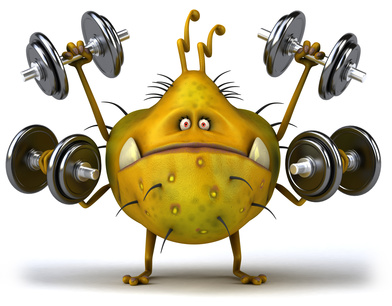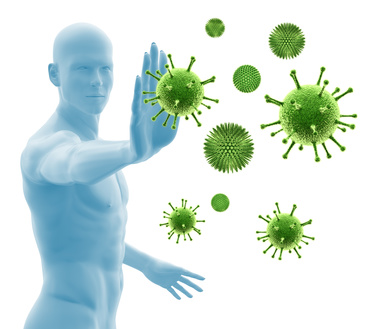Germs in the Gym and How to Avoid Them

Discover what Germs Might be Lurking in Your Gym and how to Avoid Them
Gyms can be dirty places, with potentially hundreds or even thousands of sweaty people passing through them every day. Come winter, when people often harbour the flu, things can be even worse. And that’s not to mention other nasties like E. coli or MRSA, fungus that causes Athlete’s Foot or the HPV virus which can cause Plantar warts (verrucas).
Many germs are transmitted through the mouth or eyes, so keep your hands away during a workout and wash your hands before you eat or drink anything. Other germs can enter your body through cuts or breaks in the skin. If you have any, bandage them before a workout and clean the wounds and change the dressing afterwards. If it’s major injury, skip the gym altogether. The same goes if you’ve got an illness like the flu or food poisoning which lowers your immune system and can easily be spread to others.
You might hear about hepatitis C being a risk at the gym. Luckily, no evidence has been found that it can be spread by sweat or any type of causal bodily contact, It can, however, be spread by blood-to-blood contact so if you’re involved in any type of gym activity where this might be a risk, like boxing or martial arts, for example, you should be cautious.
Equipment to Watch Out For
Cardio fitness equipment and free weights have the biggest germ risk. They are the high-traffic areas of any gym and collect a lot of sweat. Luckily, most gyms keep a bottle of disinfectant spray nearby so you can wipe down equipment before use. It’s also a good idea to keep a bottle of antibacterial gel handy to use before and after a workout.
Floor Mats
Exercise mats can have plenty of hidden dangers. In addition to all that sweat, because people put their bare feet all over the mats, you might also find fungus and Plantar wart-causing HPV virus.
The best way to avoid these germs is, of course, to bring your own mat and wash it regularly. If this isn’t viable then consider wearing gym socks and check the mat you are given to see whether it looks like it gets regularly washed. And use antibacterial gel on your hands when you’re done.
Also, keep in mind that yoga classes, there might be 30+ people in close proximity to you, so during flu season, you’ll be at much greater risk of catching something from your new neighbors.
Locker Room
Here’s where things can get really bad, with floors, benches and showers home to all sorts of unsavoury germs – potentially even worse if there are toilets attached to the locker room and people aren’t so hot on washing their hands. Stay out of danger by wearing flip flops and keeping yourself covered when sitting down. Even better, skip the locker room completely and shower at home.
And don’t discount your own gear in your mission to avoid getting sick. Wash your towels after every use (and don’t even think about sharing someone else) and make sure you do the same with you gym bag. Another thing that people often overlook is their water bottle. It needs to be cleaned, preferably in the dishwasher, after every workout otherwise germs can start to accumulate after even just a few uses.
Working out at Home
Of course, one way to minimise your exposure to germs is to build a home gym and workout there. If it’s just you and your close family using the equipment and you’re cleaning up in your own clean bathroom, then things are distinctly safer.
But it’s still important to practice good cleanliness, even if only to avoid things getting a bit smelly. Wipe down equipment after every session using disinfectant, wash mats and removable coverings regularly and avoid when sick.
If you’d like to work out at home, this guide to Choosing the Right Fitness Equipment is a great place to start!
New! Check out my new detailed MMA Training Guide page!



